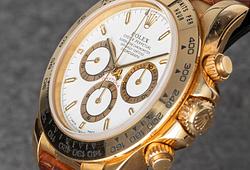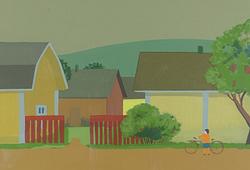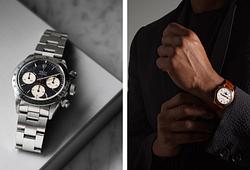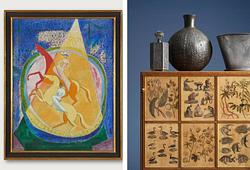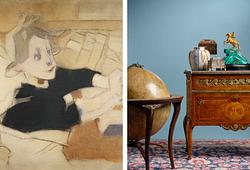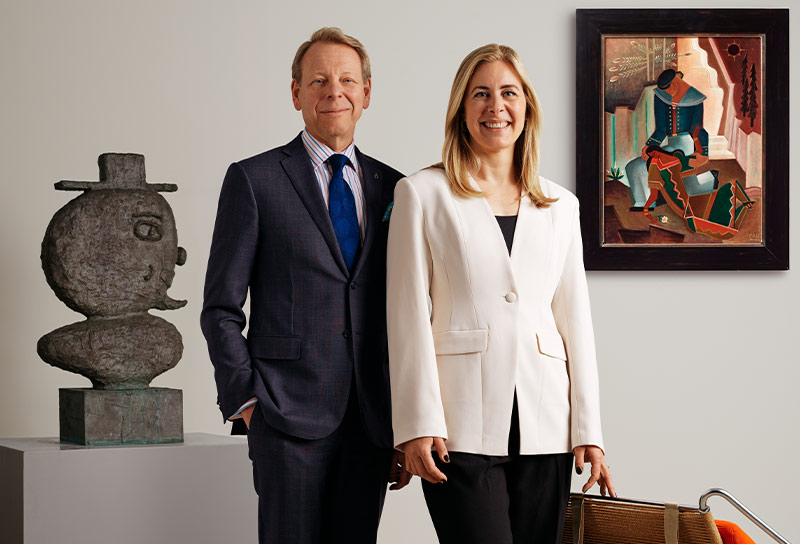Lucio Fontana
"Senza titolo"
Signed L Fontana. Also signed LF and dated -48 on verso. Glazed ceramics. Height 28 and length 34 cm.
Provenance
Acquired by the present owner 1962 at Giuseppe Mazzotti Manifattura ceramiche, Albisola, Italy.
More information
Under 1900-talet fängslades västvärlden av vetenskapen och teknikens frammarsch, det var nästan med religiös fascination som de olika upptäckterna och uppfinningarna följdes. En av de som intresserades och inspirerades av vetenskapen var den italiensk/argentinske konstnären Lucio Fontana, som absorberade den nya tiden med radio, television och framförallt rymden och satelliter. I Fontanas konstnärskap finns tydliga influenser till rymd, ljus, tid och parallella världar.
Lucio Fontana är idag mest känd för sina minimalistiska målningar, med snitt och punkteringar, men hans tidiga keramiska verk har haft stor betydelse för hans senare måleriska verk. Redan i skulpturer ifrån 1930- och 40-talet, har han börjat närma sig ett vetenskapligt tillvägagångssätt, med inslag av rymd, ljus och dimensioner, i form av just snitt och punkteringar, något han kom att applicera på sina målardukar.
Lucio Fontana, hade tidigt i sin uppväxt kommit i kontakt med den traditionella konstarten kring skulptur och som skulptör experimenterade han gärna med sten, metall och keramik. Under 1930-talet befann han sig i Frankrike och influerades då att skapa skulpturer med expressivt uttryck, han ville förmedla känslor istället för verklighet. I sina skulpturala verk återvänder Fontana till de tekniker och traditionella teman som är karakteristiska för keramik, så som landskap, religiösa scener, figurala -och animala motiv. Fontana försökte frigöra sig från de rumsliga ramarna genom att skapa spontana expressiva rörelser genom väl definierade kanter. Med detta, belyser Fontana mjukheten och mångsidigheten hos det material som han använde.
Fram till 1940-talet levde och verkade Fontana i Italien och Frankrike, men vid utbrottet av Andra Världskriget reste han till Argentina. I Buenos Aires på Academia of Altamira, föds hans idéer kring Spatalism, som kommer att spela en mycket viktig roll i hans fortsatta konstnärskap. Han skapade ett eget manifest, Manifesto Blanco. Där han uppmanar konstnärer och likasinnade att frångå de traditionella och akademiska i konsten och våga ta nya begrepp och former.
En stor del i Fontanas dragningskraft var hans förmåga att sammanfoga just skulptur och måleri. Hans val av former var inkonsekvent under hela hans karriär, från geometrik perfektion till mer svårdefinierbara former. Det handlade inte om snitten eller punkteringarna i sig, utan processen att nå dit. Fontanas bidrag till ”The Spatalism movement” och de innovativa formerna han använde sig av har inspirerat en ny generation konstnärer att våga tänka ”outside the box”. Lucio Fontana’s verk var en produkt av sin tid, oavsett val av medium eller teknik. ”Art is eternal, but it cannot be immortal”, the First Manifesto of Spatialism, Lucio Fontana.
Designer
Up until the 1940s, Lucio Fontana lived and worked in Italy and France, but at the wake of the Second World War he fled to Argentina. In Buenos Aires at the Academia of Altamira, his idea of Spazialismo was born, a artist movement grounded by Fontana which came to define the majority of his career. In his manifesto from 1946, Manifesto Blanco, the artist challenged his peers to steer away from the tranditional and academic elements of art, urging them to include new techniques and darw to create art into the fourth dimension.
A great reasoning behind Fontana's popularity was his ability to combine sculpture and painting. His choice of forms was inconsistent during the entirity of his career, from geometirc perfections to more undefinable forms. It didn't matter so much about the end result, but rather the process it took to get there. Fontana's art was a product of its time, no matter the medium or technique.
Already in 1947, Fontana began working with the concept Concetto Spaziale. A few years later his Pietre series was added where he seemlessly combines sculpture and painting by applying thick layers of paint on a canvas and thereafter adding a collage of colourful glass chips. Not long after that Fontana entered a period with Buchi, where he made holes in the canvas to break up the two dimensionality of the composition in search for the space behind the painting. At the end of the 1950s he began his work with Tagli, whereby he sliced his canvas which continuously applying his Buchi technique, a style which he continued with up until his death in 1968. Through Concetto Spaziale, Fontana managed to blurr the lines between painting and sculpture.
His first Tagli was created at the end of the summer and early autumn of 1958 when Fontana was almost 60 years old. His canvases were filled with small diagonal incisions which he grouped together. Fontana experimented with size and form, and with time the slices became less and more powerful. To reach the right effect, Fontana was incredibally precise with the surface of the canvas, coating it first with a matt, often water based, monochrome colour. His pieces with only one slice are marked as "Attesa" and the canvases with multiple slices are marked with the plural form, "Arrese". The meaning "expectation or hope" gives an additional dimension to the work. Fontana covered the back piece with "telleta," strips of deep black fabric to create the illusion of an empty space behind the canvas. In Tagli, destruction and creation merge. Every slice is formulated through a definitive and irreversable gesture. Every action which results in a wound upon the canvas simultaneously allows for a new sculptural perspective out into the black neverending space behind the canvas. Fontana's artistic journey with Tagli and Buchi happened correspondingly with the 1960s space race.
"As an artist, when I work with one of my perforated canvases, I have no desire to create a painting; I want to create an opening for space, to give art a new dimension, to bind it to the cosmos, as it endlessly continues beyond the boundaries of the painting. With my innovation of holes drilled through the canvas in repeated formations, I do not wish to decorate a surface, but rather to break up its dimensional limitations. Behind the perforations lies a newfound freedom for interpretation, but also, just as inevitably, an end to art." (Lucio Fontana, 1966)
Fontana came and had several exhibitions in Sweden during the 1960s. One of his greatest admirers was the gallerist Pierre Lundholm at Galerie Pierre in Stockholm who not only arraned exhibitions in 1964, 1967, and after Fontana's death in 1971, but also stored and sold Fontana's work. Fontana even managed to exhibit at the Swedish French Art Gallery in 1965 as well as have a large exhibition at Moderna Museet in 1967 in Stockholm through the initiative of Pontus Hultén. His paintings were admired by the most asteemed collectors, and with the wider public, his works were preceived as bizzar and incomprehensible. Today Lucio Fontana is praised for his art that stood as a testament beyond his time.
Read more



